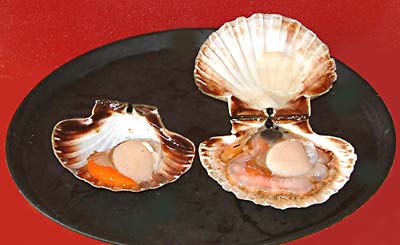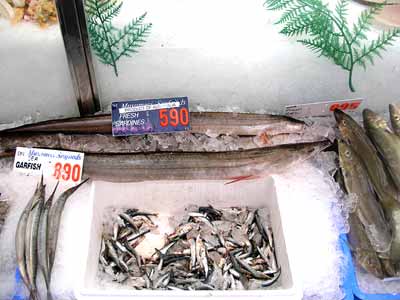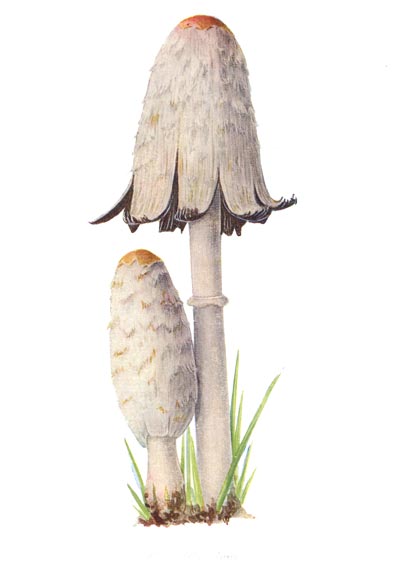
Pilgrim or great scallop. These are shellfish with white meats and pink corals, often cooked in their shells with the corals and have sweet, succulent meat if properly cooked. According to legend, the body of St James (St-Jacques) travelled with a boat with neither oars nor sails around the Iberian coast, coming to rest in Compostela. Many miracles were associated with this journey, including one where the horse of a pagan nobleman leaped into the sea. They emerged carrying the body of St James covered in scallop shells. This resulted in the nobleman converting to Christianity. Pilgrims to Santiago de Compostela have traditionally worn scallop shell badges in commemoration of St James, or used scallop shells as begging bowls. The whole pilgrim route is decorated with his emblem. In some parts of Europe they are eaten on the feast day of St James on 25 July to commemorate the arrival of pilgrims or peregrinos at Santiago de Compostela, often with tomatoes and garlic. They are more often simply and lightly fried.

Conger eel, sea eel. The crustaceans and fish which form its diet contribute to its own good flavour. It is usually sold in steaks. It has few bones and good firm flesh with excellent flavour. The neck end has a better ratio of flesh to bone so is better for cooking as steaks, whereas the tail end, which is bonier, makes a useful addition to soups and stocks.

Shaggy ink cap. A type of fungus which is edible when young. The cap overhangs so that, rather than the more common round cap, the shaggy ink cap has an elongated ovoid shape. It has shaggy scales which, when young, are white but which become darker with age. As it ages it becomes quite unpleasant to eat and eventually dissolves into a puddle of black liquid, giving it its English name.
Sweet pizza or flatbread made with candied fruit and nuts and traditionally available for the feast of Saint John on 24th June each year.